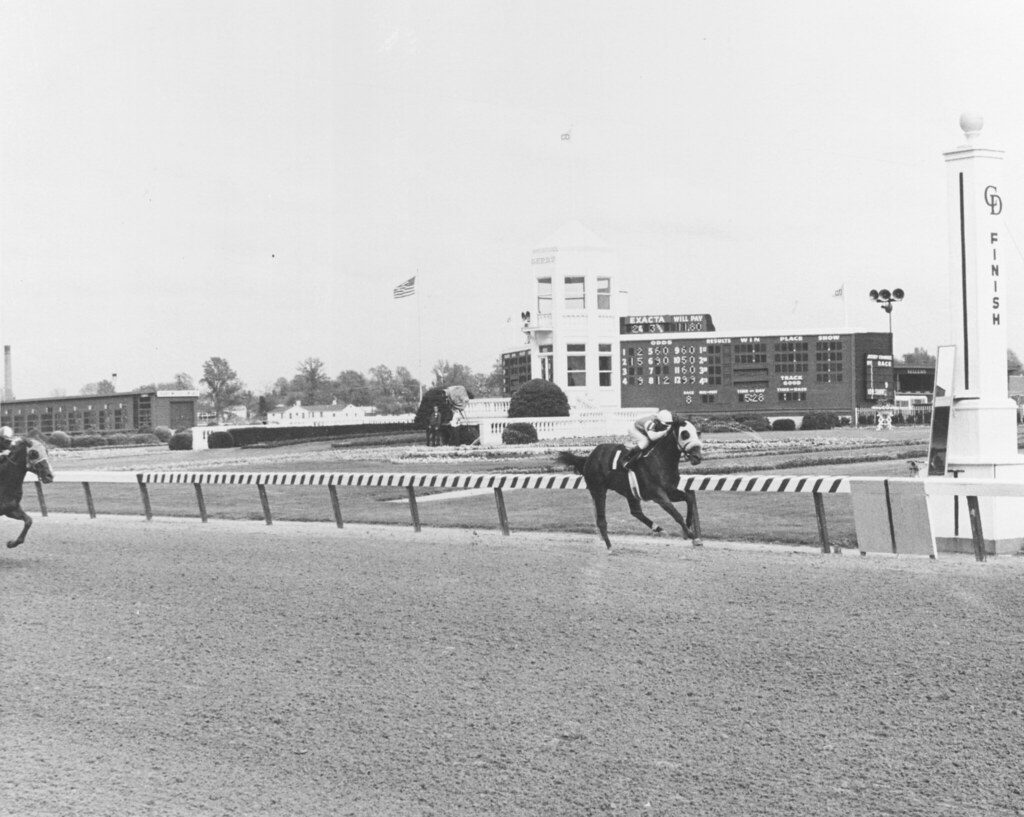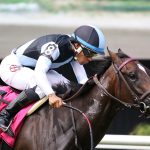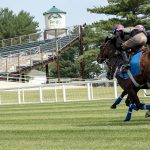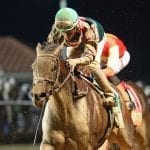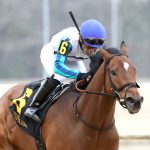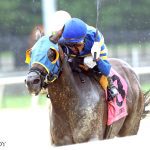BackTracks: Giant killer J. O. Tobin
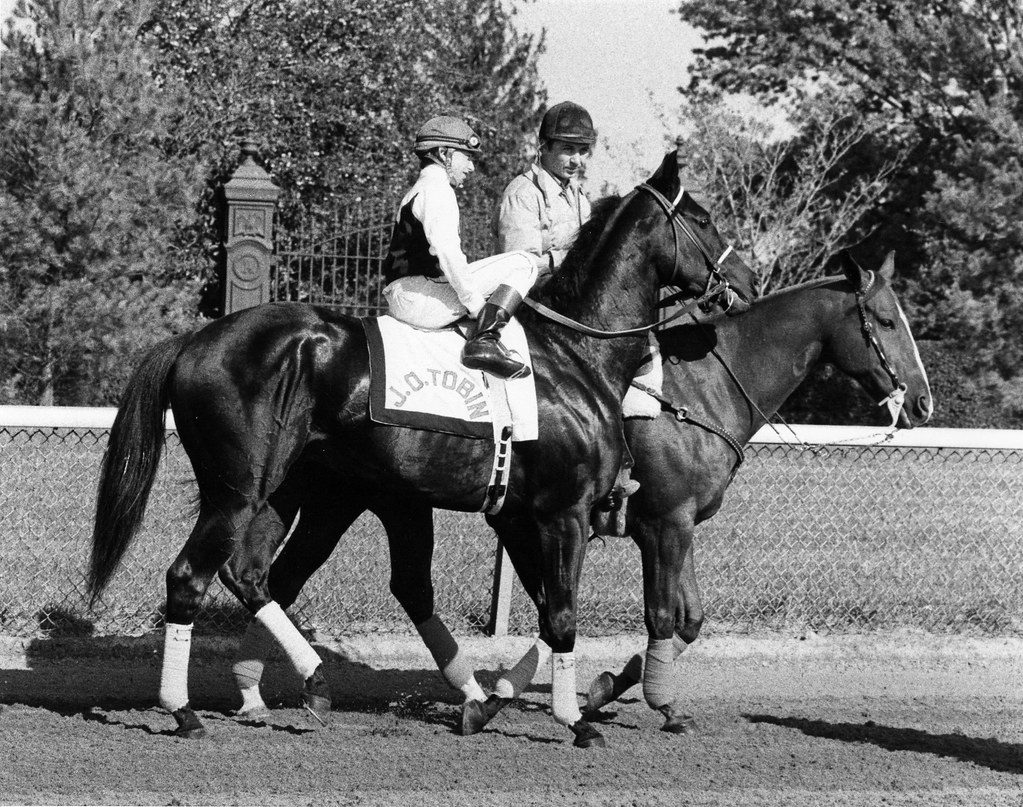
Purchase, Discovery, Menow, Jim Dandy, Onion, Keen Ice, J. O. Tobin.
In looking at this short list, what do these names all have in common?
They happen to be the conquerors of titans, each the first horse to beat a Triple Crown winner after they have earned their mantle of immortality.
For J. O. Tobin, his victory over Seattle Slew in the 1977 Swaps Stakes not only handed that champion his first career defeat, but it also showed American racing fans a side of this Maryland-bred that the British had already seen.
BOTH SIDES (OF THE ATLANTIC) NOW
J. O. Tobin came to be a Maryland-bred by happenstance. His breeder/owner George A. Pope, Jr. owned El Peco Ranch near Merced, California, and raced homebreds like Hill Shade, a daughter of the ranch’s own stallion Hillary. The Popes were active breeders and owners in the 1960s and 1970s, with stables in England as well as in the United States. Hill Shade was one of those who campaigned over English grass courses, winning multiple stakes and then spending her early broodmare years there.
Her first foal was a filly sired by Epsom Derby winner Crepello named Mysterious. Her wins in the One Thousand Guineas and the Epsom Oaks gave the Popes classic wins in both England and the United States, alongside their Kentucky Derby win with Decidedly in 1962.
Hill Shade returned to the United States in 1973 and visited the Spendthrift stallion Never Bend that same year. The Popes decided to breed her to Northern Dancer in 1974 so they sent her to Maryland to foal at Windfields Farm in Chesapeake City. There she gave birth to a dark bay colt with a splotch of white on his forehead and his nose.
Named for a family friend, J. O. Tobin was sent to England and the barn of champion trainer Noel Murless, who had campaigned Mysterious, for his two-year-old season. There, the colt made an immediate impression.
“The first time on the track at Newmarket, Mr. Murless commented on what a nice mover he was,” his English exercise rider, Clifford Lines, shared with Bill Nack in 1977.
J. O. Tobin raced four times that year, winning three. His victory in the Champagne Stakes at Doncaster locked up the English championship for the American horse, but Murless’ retirement later that year prompted the Popes to bring J. O. Tobin back to the United States.
Back in the States, this Maryland-bred was ready to pick up where he left off at age two. First, though, he had to make the jump from turf to dirt.
NEW WORLDS TO CONQUER
“The first time I breezed him, I said, ‘I never saw a horse do things like this,’” trainer Johnny Adams said of J. O. Tobin as he prepared the colt for a turn through the Triple Crown classics. The former jockey knew what he was talking about; three times the leading rider in America, Adams had won the Preakness Stakes on Hasty Road in 1954. He retired from the saddle in 1958 and turned to training soon after.
Adams spent that winter with J. O. Tobin at Santa Anita, planning the colt’s path to the Derby as Seattle Slew was doing the same on the East Coast. Second in his first start on the dirt, the colt soon came down with a virus, which caused him to miss training as he recovered from a cough and fever.
[See J. O. Tobin’s win over Seattle Slew]
With the Derby in his review mirror, Adams started J. O. Tobin in the Coronado Handicap on turf at Hollywood Park. That easy win prompted a trip to Pimlico for the Preakness Stakes. The distance was a question for the Never Bend colt, who had not run longer than a mile at that point, but his sire had finished second in the Kentucky Derby and third in the Preakness. The Popes bet that their colt could handle the distance and sent him postward alongside Seattle Slew and Run Dusty Run.
J. O. Tobin broke awkwardly under jockey Bill Shoemaker, one of the last horses away from the gate, and never factored in the middle jewel of the Triple Crown. Adams shipped the colt back to California, where he won an allowance race a month after the Preakness. In the interim, Seattle Slew took the Belmont Stakes to win the tenth Triple Crown, the first horse to complete the series with an undefeated record.
Adams decided to start J. O. Tobin in the 1¼-mile Swaps Stakes at Hollywood Park next. Lured by a bonus from Hollywood Park management, owners Mickey and Karen Taylor and Jim and Sally Hill sent Seattle Slew out to California for the same race.
The race would take place July 3, three weeks after Seattle Slew had secured the Triple Crown with a win in the Belmont Stakes – and just eight days after J. O. Tobin’s allowance victory.
THE TAMING OF THE SLEW
“Tobin was backing up at the start of the Preakness. Today, he came out of the gate like a bullet. That was the difference,” jockey Bill Shoemaker said after J. O. Tobin’s stunning victory in the Swaps.
The margin was eight lengths at the wire, with Seattle Slew sixteen lengths back in fourth, and the time was a sizzling 1:58 3/5 for the ten furlongs. That was just two-fifths off the track and world record for the distance.
The shockingly easy victory earned the colt a trip back East for the Woodward Stakes at Belmont Park, while Slew developed respiratory issues that ended his three-year-old season early. J. O. Tobin was a fading fifth behind Forego in the Woodward, his last start of 1977.
At four, J. O. Tobin did most of his racing in California for new trainer Laz Barrera, winning five of his eight starts, including the Grade 1 Californian in May. Barrera then sent him east for his last three of the year, taking the Tom Fool Handicap before finishing behind Alydar in the Whitney Stakes. Blood blisters in his heels prompted the Popes to retire their Never Bend colt, but his wins in 1978 were enough to earn J. O. Tobin a share of the Eclipse for champion sprinter that year.
He was retired to stud at Spendthrift Farm, occupying the stall his sire had lived in prior to his death the previous year. In the stall next to J. O. Tobin stood a dark bay stallion familiar to him, Seattle Slew.
In his days on the racetrack, this Maryland-bred won championships in England and America, for work on both turf and dirt. He also earned state-bred honors each year he competed, including Horse of the Year for 1978.
J. O. Tobin’s career may have been defined by defeating Seattle Slew that day at Hollywood Park, but his speed over dirt or turf, at sprint or classic distances, was enough to earn him a spot in the Maryland Thoroughbred Hall of Fame.
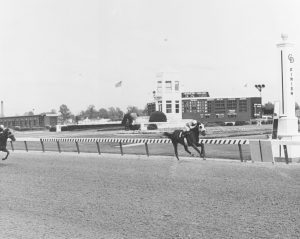
BackTracks: Key to the Mint unlocks a title
In a new BackTracks, the story of the largely forgotten Key to the Mint, who was champion three-year-old despite going 0-for-2 in Triple Crown races.
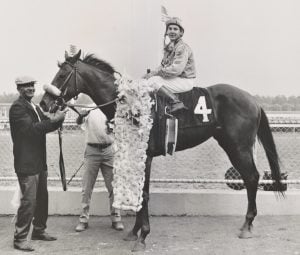
BackTracks: Run the Gantlet’s championship year
In today’s BackTracks, Run the Gantlet finds new life on the turf, and fills major shoes in trainer Elliott Burch’s powerful stable.
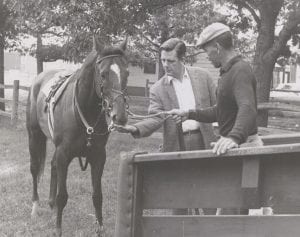
BackTracks: Elliott Burch’s remarkable triple
BackTracks focuses on Midlantic racing history. Today, Hall of Famer Elliott Burch, who, three times in a decade, pulled off an extraordinary training feat.
Sources
- https://en.wikipedia.org/wiki/Never_Bend
- https://en.wikipedia.org/wiki/Windfields_Farm_(Maryland)
- https://en.wikipedia.org/wiki/J._O._Tobin
- https://en.wikipedia.org/wiki/John_H._Adams_(jockey)
- http://www.americanclassicpedigrees.com/never-bend.html
- http://www.americanclassicpedigrees.com/j-o-tobin.html
- https://mdthoroughbredhalloffame.com/index.php/the-horses/class-of-2021/j-o-tobin
- https://www.pedigreequery.com/j+o+tobin
- https://www.racingmuseum.org/hall-of-fame/jockey/john-h-adams
- https://www.washingtonpost.com/archive/sports/1977/05/14/dont-count-tobin-out/a3284861-c416-4f68-96f7-7eb934eb93d0/
- https://www.nytimes.com/1977/07/04/archives/seattle-slew-4th-in-race-on-coast-his-first-defeat-seattle-slew-is.html
- https://timesmachine.nytimes.com/timesmachine/1958/06/24/89102712.html?pageNumber=40
- https://vault.si.com/vault/1977/07/11/slew-blew-west-test
- https://cdnc.ucr.edu/?a=d&d=MT19670926.2.114&e=——-en–20–1–txt-txIN——–
- https://www.bloodhorse.com/horse-racing/articles/242956/obituary-pope-won-1962-kentucky-derby-with-decidedly
PRINT SOURCES
Perdue, Mary, Landaluce: the Story of Slew’s First Champion, Lexington, KY: the University Press of Kentucky, 2022, 27.
Mearns, Dan, Thoroughbreds Legends: Seattle Slew, Lexington, KY: Eclipse Press, 2000, 83-87.
Abbott, Bion, “Seattle Slew Loses First Race,” Greenville News, July 4, 1977.
Gaffer, Wes, “The Winner Leaves Them Limping,” Daily News (New York, NY), May 22, 1977.
“George Pope Dies – Owner of J. O. Tobin,” Fresno Bee, January 28, 1979.
“J. O. Tobin Is Retired,” Herald Statesman, September 10, 1978.
Nack, Bill, “J. O. Tobin, Unknown Quantity,” Newsday, May 19, 1977.
“Seattle Slew Beaten as J. O. Tobin Wins Rich Swaps Stakes,” Baltimore Sun, July 4, 1977.
“Slew’s Trainer Says He Was Wrong,” Newsday, May 19, 1977.
Stevenson, Jack, “J. O. Tobin Wins; Slew 4th,” Santa Ana Register, July 4, 1977. “The Wicked North, Stuka Renew Rivalry in Hollywood’s Californian,” Louisville Courier-Journal, June 4, 1994.
LATEST NEWS




